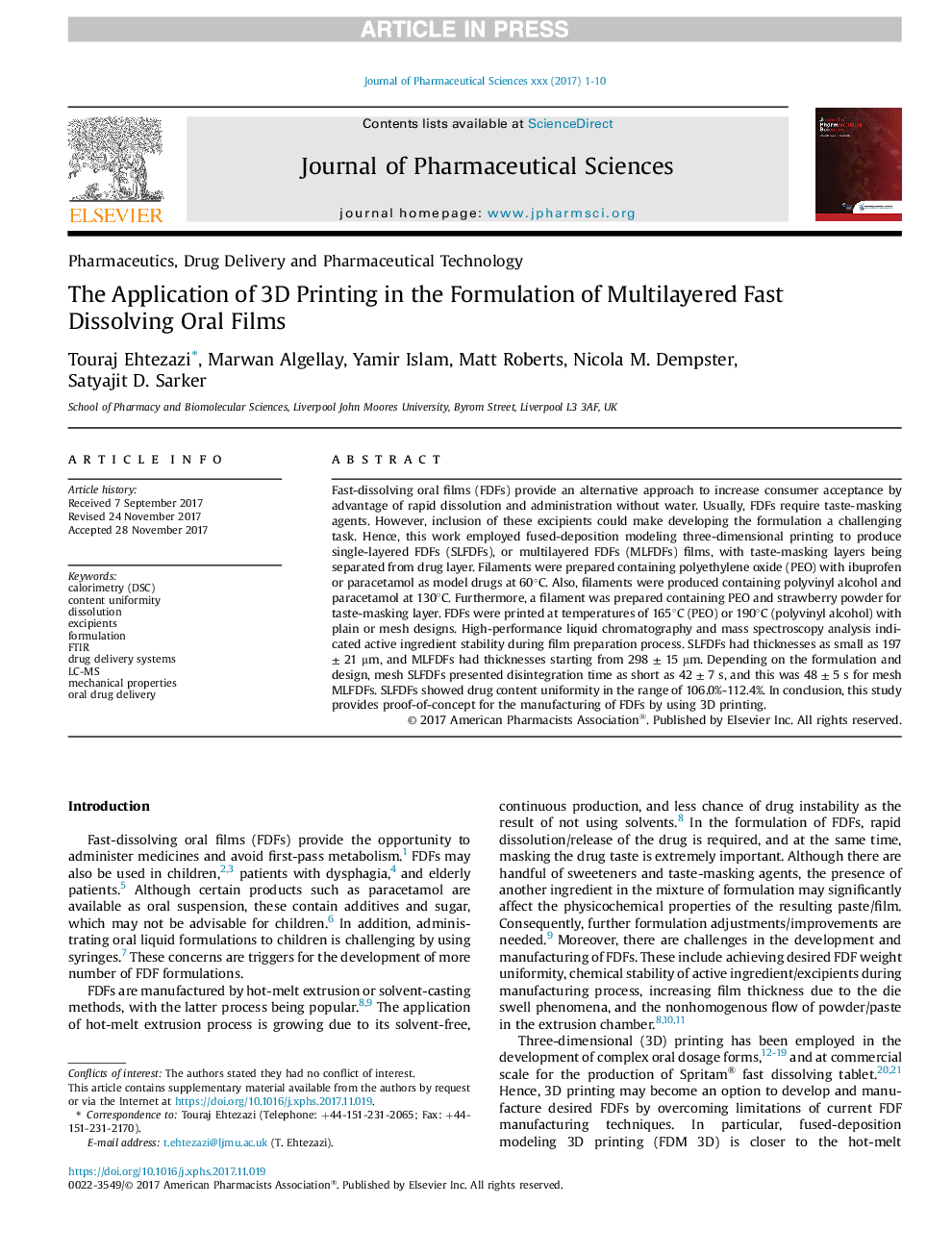| Article ID | Journal | Published Year | Pages | File Type |
|---|---|---|---|---|
| 8513390 | Journal of Pharmaceutical Sciences | 2018 | 10 Pages |
Abstract
Fast-dissolving oral films (FDFs) provide an alternative approach to increase consumer acceptance by advantage of rapid dissolution and administration without water. Usually, FDFs require taste-masking agents. However, inclusion of these excipients could make developing the formulation a challenging task. Hence, this work employed fused-deposition modeling three-dimensional printing to produce single-layered FDFs (SLFDFs), or multilayered FDFs (MLFDFs) films, with taste-masking layers being separated from drug layer. Filaments were prepared containing polyethylene oxide (PEO) with ibuprofen or paracetamol as model drugs at 60°C. Also, filaments were produced containing polyvinyl alcohol and paracetamol at 130°C. Furthermore, a filament was prepared containing PEO and strawberry powder for taste-masking layer. FDFs were printed at temperatures of 165°C (PEO) or 190°C (polyvinyl alcohol) with plain or mesh designs. High-performance liquid chromatography and mass spectroscopy analysis indicated active ingredient stability during film preparation process. SLFDFs had thicknesses as small as 197 ± 21 μm, and MLFDFs had thicknesses starting from 298 ± 15 μm. Depending on the formulation and design, mesh SLFDFs presented disintegration time as short as 42 ± 7 s, and this was 48 ± 5 s for mesh MLFDFs. SLFDFs showed drug content uniformity in the range of 106.0%-112.4%. In conclusion, this study provides proof-of-concept for the manufacturing of FDFs by using 3D printing.
Keywords
Related Topics
Health Sciences
Pharmacology, Toxicology and Pharmaceutical Science
Drug Discovery
Authors
Touraj Ehtezazi, Marwan Algellay, Yamir Islam, Matt Roberts, Nicola M. Dempster, Satyajit D. Sarker,
